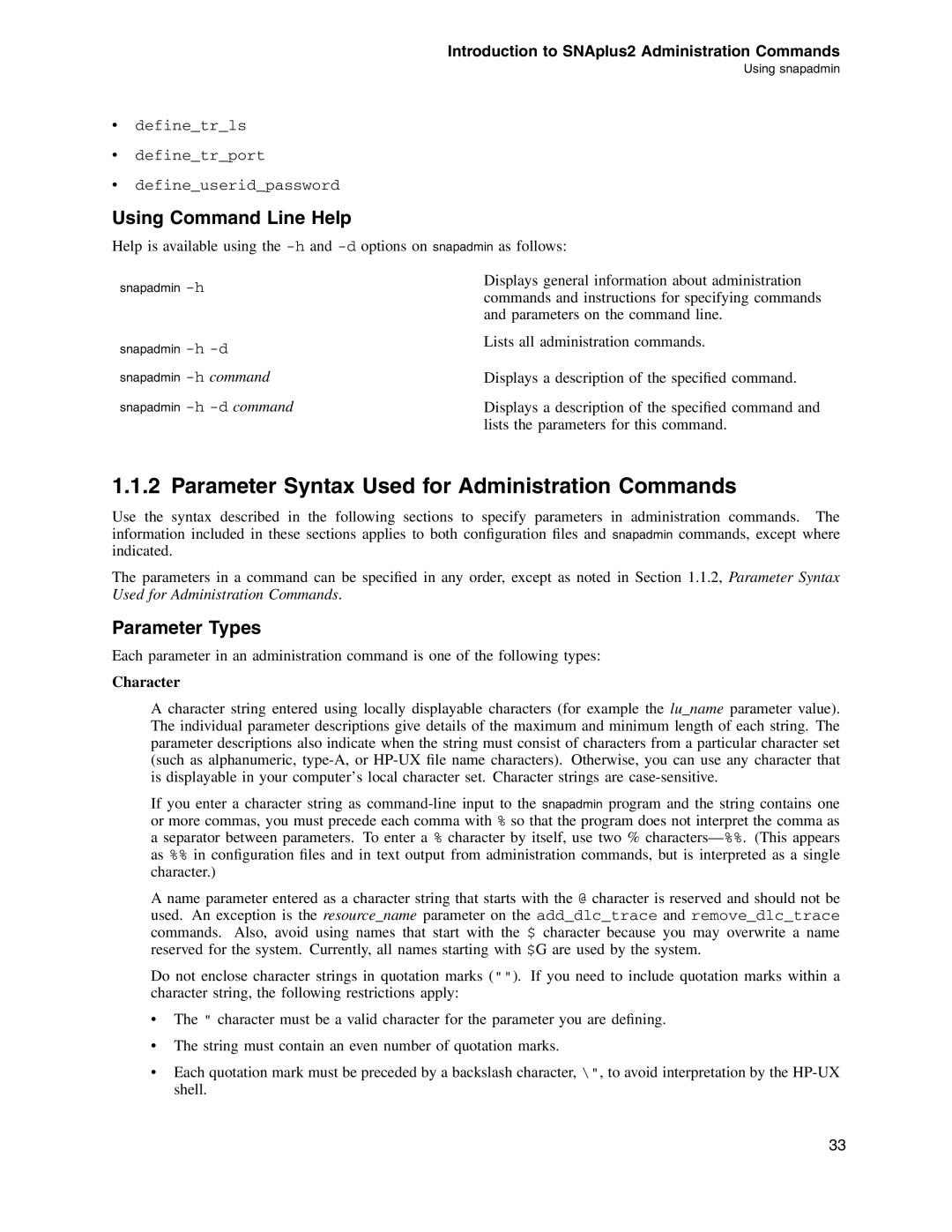Introduction to SNAplus2 Administration Commands
Using snapadmin
•define_tr_ls
•define_tr_port
•define_userid_password
Using Command Line Help
Help is available using the
snapadmin
snapadmin as follows:
Displays general information about administration commands and instructions for specifying commands and parameters on the command line.
snapadmin
Lists all administration commands.
Displays a description of the specified command.
Displays a description of the specified command and lists the parameters for this command.
1.1.2 Parameter Syntax Used for Administration Commands
Use the syntax described in the following sections to specify parameters in administration commands. The information included in these sections applies to both configuration files and snapadmin commands, except where indicated.
The parameters in a command can be specified in any order, except as noted in Section 1.1.2, Parameter Syntax Used for Administration Commands.
Parameter Types
Each parameter in an administration command is one of the following types:
Character
A character string entered using locally displayable characters (for example the lu_name parameter value). The individual parameter descriptions give details of the maximum and minimum length of each string. The parameter descriptions also indicate when the string must consist of characters from a particular character set (such as alphanumeric,
If you enter a character string as
A name parameter entered as a character string that starts with the @ character is reserved and should not be used. An exception is the resource_name parameter on the add_dlc_trace and remove_dlc_trace commands. Also, avoid using names that start with the $ character because you may overwrite a name reserved for the system. Currently, all names starting with $G are used by the system.
Do not enclose character strings in quotation marks (""). If you need to include quotation marks within a character string, the following restrictions apply:
•The " character must be a valid character for the parameter you are defining.
•The string must contain an even number of quotation marks.
•Each quotation mark must be preceded by a backslash character, \", to avoid interpretation by the
33
